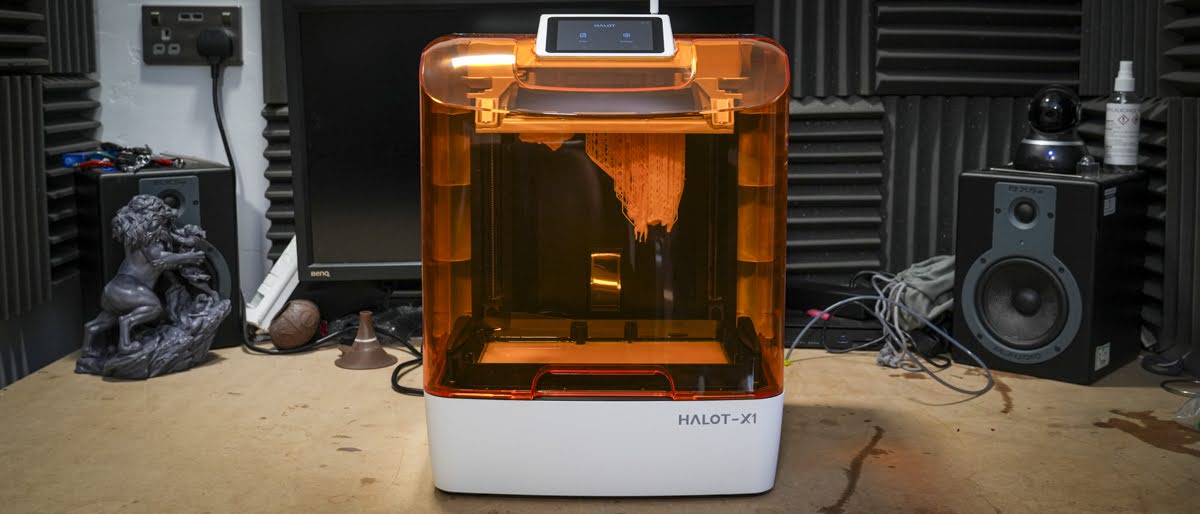TechRadar Verdict
I like the fact that I could instantly switch this machine on, fill the tank, and then essentially leave it to get on with building the 3D print without all the fuss that I'm so used to with resin 3D printers. Then, after printing, removing the print was easy, all I needed to do was twist the build plate, and the print popped off. If it could just clear up the resin mess as well, it would be spot-on perfect.
Pros
- +
Ultra‑fine resolution
- +
Auto levelling
- +
Decent build volume
Cons
- -
Software interface limited
- -
Premium price tag
- -
Resin workflow
Why you can trust TechRadar
Usually, by the time I've gone through the first litre of resin, I'm tired of the mess that these resin 3D printers tend to create. So, while I was excited about the innovative new feature design of the Piocreat Halot-X1, I was also slightly reserved about this new machine.
As yet, there is only one resin 3D printer that I feel 100% confident about using all the time, and that is the Formlabs Form 4, but as that particular printer is well out of the price range of most people, there have to be other options available to supply ultra-high-resolution prints from this format.
The Halot-X1 has come a long way compared with many other resin 3D printers on the market, and it promised to provide some very fine detail prints, which I can totally confirm it does. In fact, I was impressed with the quality of the models it produced.
The initial set-up was incredibly easy, just remove the packaging, fill the tank with resin, and select the print impression. There's no levelling process or anything else. The one thing that struck me from the outset was the change in the build plate design, which was completely different from anything I'd seen before.
I was dubious about the design working when it started due to the complete lack of needing to set anything up. It just seemed too good to be true that there was no fiddling around with sheets of paper and other checks. Literally, it was a straightforward switch-on and press go.
However, after 30 minutes, I could see the print emerging, and it looked absolutely spot-on. As the process continued, the print formed beneath the build plate. I could see that the auto-levelling process had worked 100%. I've now had the machine for well over a month. I've not been running it continuously, but every few days, printing out objects and small characters just to see how far I could go with this particular printer. So far, it's been incredibly consistent.
There have been a few issues along the way, and inevitably, quite soon, I am going to have to change the nFEP film. But for now, with several litres through the machine, all seems to be working absolutely fine.
Sign up to the TechRadar Pro newsletter to get all the top news, opinion, features and guidance your business needs to succeed!
While for the most part the use is simple and easy, there have been a few hiccups, the auto resin feed system just doesn't seem to work, however much I fiddle with it, and there have been a few support structure fails. From experience with previous resin printers, I've found checking the tank after each model is always a good idea.
Then there's the age-old issue of the mess. After each print finishes, it needs to be transferred over to a wash, then cured, and along the way, gloves and goggles still need to be worn and disposed of. So while you might get that additional quality, it does come at the cost of time.
However, this resin 3D printer is definitely a step forward, and with that new build plate design, making it so much easier to extract the prints, it does help reduce a lot of the mess that's usually created. So, while it's by no means perfect, this is definitely a step in the right direction.
Piocreat Halot-X1: Price & availability
The Piocreat Halot-X1 can be purchased directly through the Piocreat website, although you do need to ask for a quote on the price rather than make a direct purchase.
Otherwise, retailers such as 123-3D.co.uk retail the printer for £579, and in the US, companies such as 3DWithUs.com list the printer between $579 and $749. The availability of the printer will become more widespread soon, and you should be able to purchase it through many online retailers such as Amazon.com.
Piocreat Halot-X1: Design
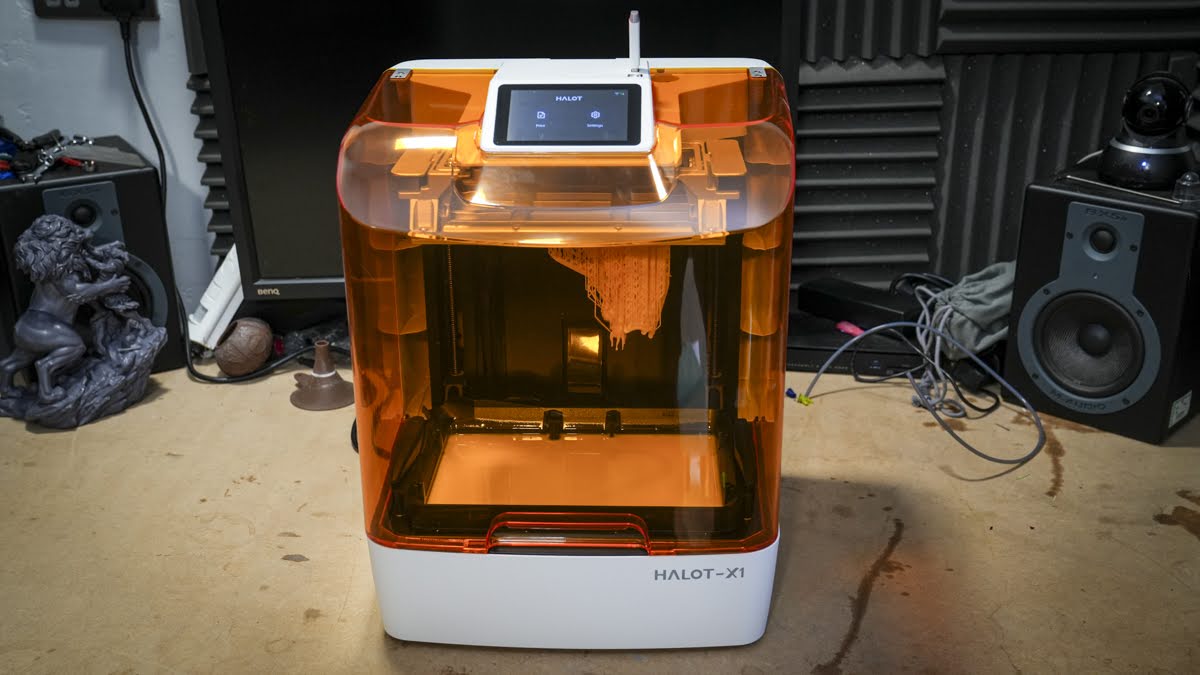
The Piocreat Halot-X1 has descended from the Creality Halot series and features much of the same consistency and quality we saw on those machines. In fact, Creality have passed over their resin printers to this new company, Piocreat, which usually deals with more B2B machines, with the Halot-X1 being one of their first consumer-level options.
Compared with the old Halot machines, the X1 takes on a new style and design. It's has a smaller footprint and overall form factor. It's also more ergonomically designed, with a touchscreen on top, a visor-style shield protecting the resin area, and a tank that raises, rather than using the traditional mechanism of the print bed lowering into the tank.

The machine also comes with an automatic resin feed system in the combo version, which just adds to the level of professionalism. It's something we've seen on previous machines with various rates of success. Again, as with many 3D printers, there are multiple ways to transfer files over to the system, either through USB or Wi-Fi, and it's good to see this did seem solid with our review sample.
Compared to many other resin 3D printers, the footprint is relatively small, 344 x 331 mm with a height of 434 mm. You do then have to consider the visor when that's open, but to be honest, compared to many others, it's nice and small and definitely easier to use due to the design, compared with those that still utilise a lift-off cover.
The weight is also relatively light at 12.9 kg, lighter than most FFF printers. This essentially means it's very easy to stick in the corner of an office. However, because it's resin, you do really need to make sure that it's well vented, at the very least by a window, and ideally with its own enclosure and extractor to ensure that any toxic fumes don't enter your workspace.
When it comes to the design, it just looks completely different to the past HALOT machines, with a more modern design. There are a few big changes alongside the aesthetics when compared with previous generations, most notably the quick-release platform, which features a twist-release mechanism that can release any print in around three seconds. That time proved pretty much correct during testing.
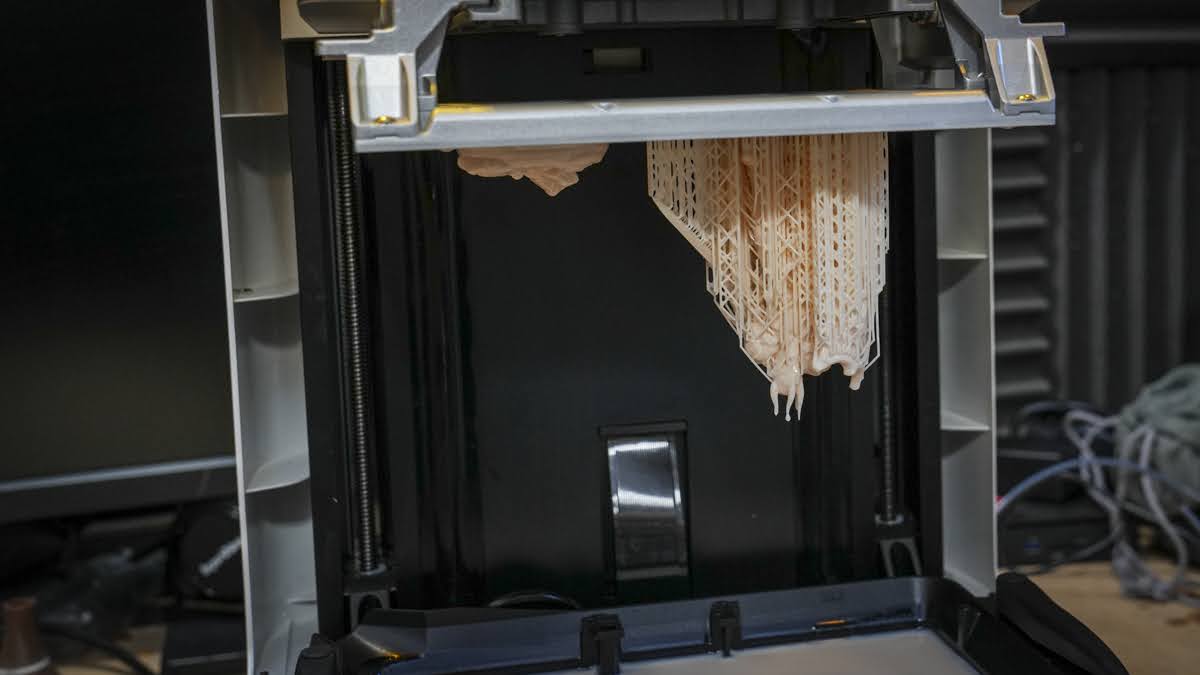
Piocreat Halot-X1: Features
Connectivity: USB + Wi-Fi support
Size: 344 × 331 × 434 mm approx
Accessories: Quick-release build plate, resin vat, tools, optionally AFU (auto resin feed unit)
Build Volume: 211.68 × 118.37 × 200 mm
Layer thickness: 0.01–0.2 mm
Print speed: Up to ~170 mm/h
Resolution: 16K Mono LCD: 15,120 × 6,230 px, pixel size ~14 × 19 µm
Motion system: Fixed build plate, moving optics/vat
Initially, the Halot-X1 looks like any other resin 3D printer, but there are some major changes in the technology and design. Starting off, however, with some of the more traditional features, the 16K mono LCD offers a 15,120 x 6,230 resolution with a pixel size of 14 x 19 µm. This should guarantee extremely fine prints, and that’s certainly what I saw during the test.
Print speed is also finely tuned with speeds up to 170 mm/h, which is relatively fast, by no means the fastest on the market, but considering the small footprint and balanced pricing, that’s not a bad rate at all. Likewise, the build volume is impressive for the size of the machine at 211.68 x 118.37 x 200 mm, large enough for most character and miniature printing, and also suitable for a good amount of prototype engineering prints. However, if you want to go larger than that, an FDM printer is a better idea.
On to some of the more major new features, including the auto-levelling. This works with a fixed build plate, so there’s no need for manual calibration, and throughout testing, this actually proved incredibly effective.

There’s also a motion detection system so that the vat screen light moves instead of the build plate, this helps to reduce shaking and improve stability during the print.
The LCD and exposure system have also been overhauled with a 92-zone intelligent exposure system, which only enables the areas that need to be lit. This helps to improve the longevity of the LCD.
There’s also an optional Double AFU or auto-feed unit, and this enables resin monitoring, auto resin refill, preheating of the resin, RFID identification for the bottles, and generally less need to interact with any resin. While I had this kit for the review, the bottles of Creality resin that I had didn’t seem to be compatible, so this is something I’ll return to when I have compatible resin bottles to test.
The most notable new feature, as I mentioned in the build section, is the new quick-release build plate. At the same time, it might seem like a small change, as we saw with the Formlabs Form 4, a quick-release plate can make a huge difference to the ease of use of these machines.
Piocreat Halot-X1: Performance
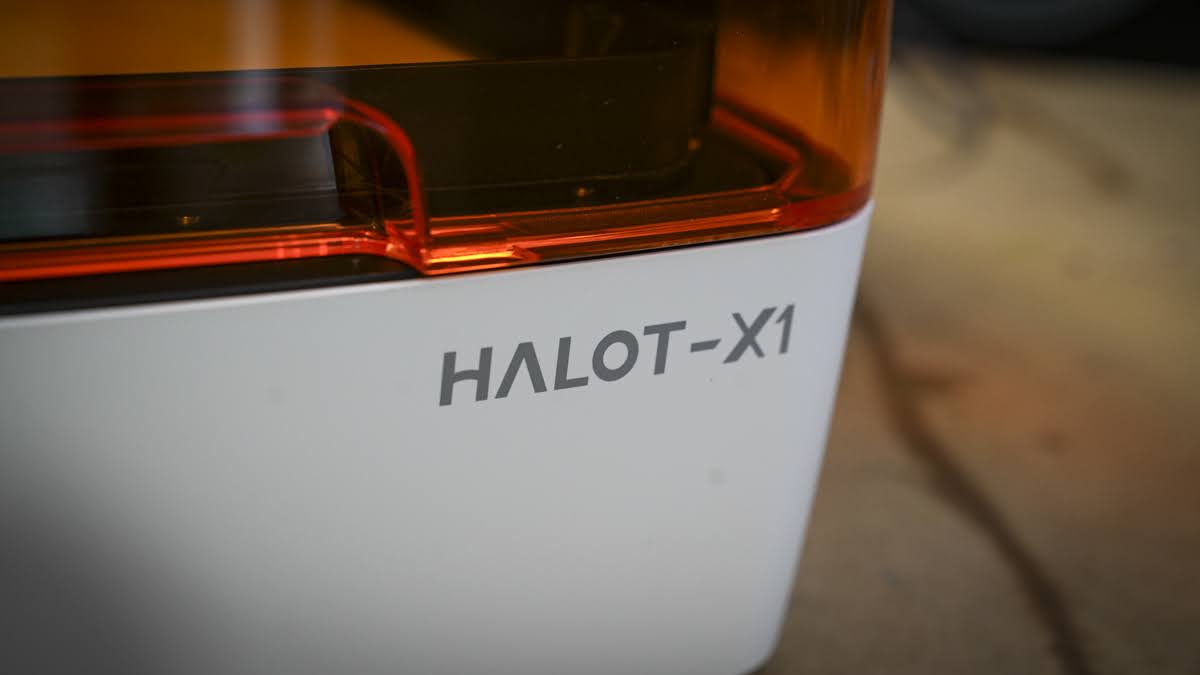
The setup of the Halot-X1 was probably one of the quickest of any resin 3D printer that I’ve used. Essentially, all I needed to do was remove the packaging, make sure everything was in place, switch it on, pour the resin into the tank, and press go. There’s a single model pre-installed onto the system, and as I just pressed play, after no more than 10 minutes of set-up, the Halot-X1 got to work printing.
The initial print took a few hours to run through, and from the intricate network of support material, I could already see the quality of the print within. While there was quite a bit of support structure, it was all very fine and detailed.
Once the print had finished, I pulled the platform away from the printer, twisted the two handles on the side and the print dropped the short distance into the wash basket. It was then left to wash for around 30 minutes. On removing the print, the support structure was removed relatively easily, revealing an extremely detailed print below.
This is, of course, the highly optimised print that comes with the printer, so I did expect it to be exceptionally good, and thankfully, it was. Despite my choice of resin color, the detail and quality of the modelling really stood out. It is a bit of a shame that only one test model is included on the machine, I would’ve liked two or three, just to test out what the machine was capable of before trying my own options.
However, switching over to Halot Box and loading in my first few test prints, I transferred them to the machine via a USB stick, due to the fact that I was having some initial connection issues between the machine and my network. That issue seemed to be resolved later on through a firmware update.
As the first few prints emerged, I was once again struck by just how quick and easy this was. I think taking out the step where you have to use a spatula to extract your prints, which can often be a really messy process, just makes using the printer much easier. You still need gloves and eye protection, but it's far easier than with most other printers.
I’ll also say that I always use these printers in an extremely well-ventilated room. So while there might have been some fumes coming from the resin, there was a constant draught of air through the workshop to ensure that those fumes didn’t hang around. And actually, with a fully sealed environment, it did appear that the fumes inside this machine are well contained.
Alongside the printer, I also had the AFU unit, which should’ve enabled me to use the auto resin filling option. To be honest, the AFU unit looks great. However, once I plugged it in and tried to install a Creality resin bottle, I found that the height of the bottle wasn’t sufficient for the tube. Then, when I tried to adjust the tube, I found I couldn’t get a decent seal for the screw cap onto the resin bottle. Eventually, I realised this wasn’t the correct bottle to use with the system.
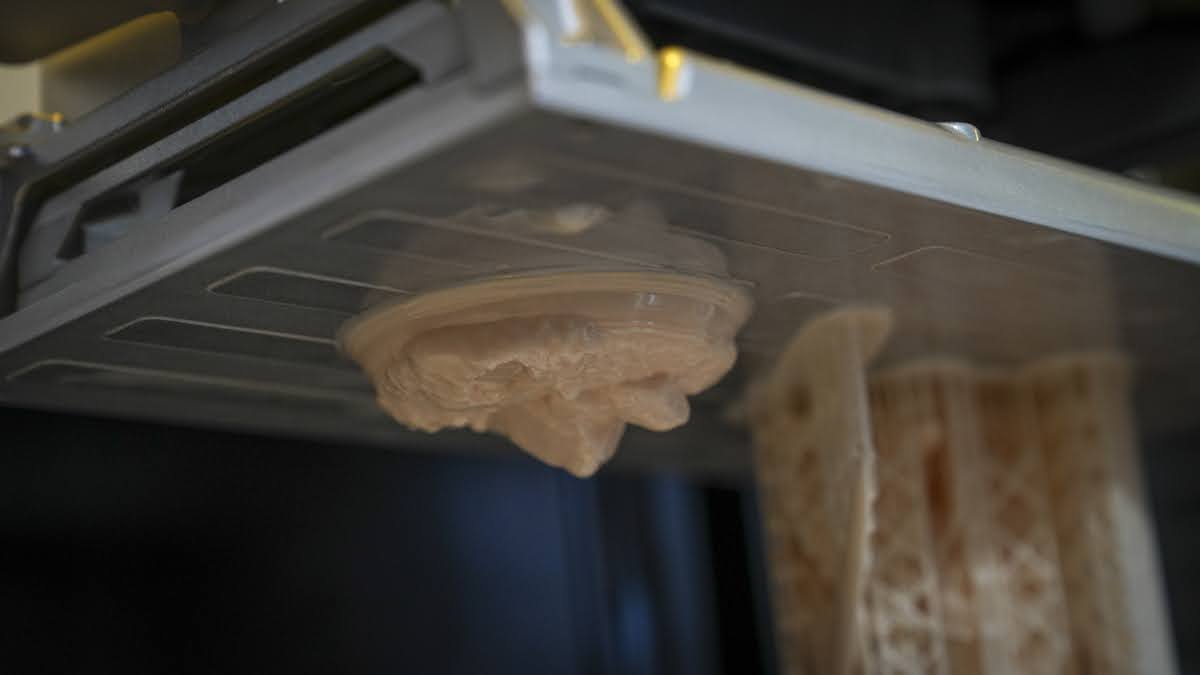
Trying out a few other options and bottles that correctly fit the cap, I still couldn’t get the system to feed properly. So in the end, I just left it aside, something I’ll take a look at again at a later date.
Ultimately, now with several litres of resin poured through the system, and lots of characters and small prototype objects printed, I’m impressed, firstly by the speed, and secondly by the pure accuracy of the prints. There’s a high quality to the finish, and the surface detail was really well produced. There were a few situations where the support structure was missing, it obviously started to print, but then got stuck at some point, only to partially reappear on a later overhang. But this was rare, and always easy to clear from the main print.
When it came to straight lines and the visibility of layers, the fine resolution really does make a difference, and the final print is as close to injection moulding as I’ve seen from any resin printer at this price. So if you’re looking for a resin 3D printer for modelling, small production runs, or printing miniatures, then, actually, for the price, this is the best option I’ve yet seen.
Piocreat Halot-X1: Final verdict
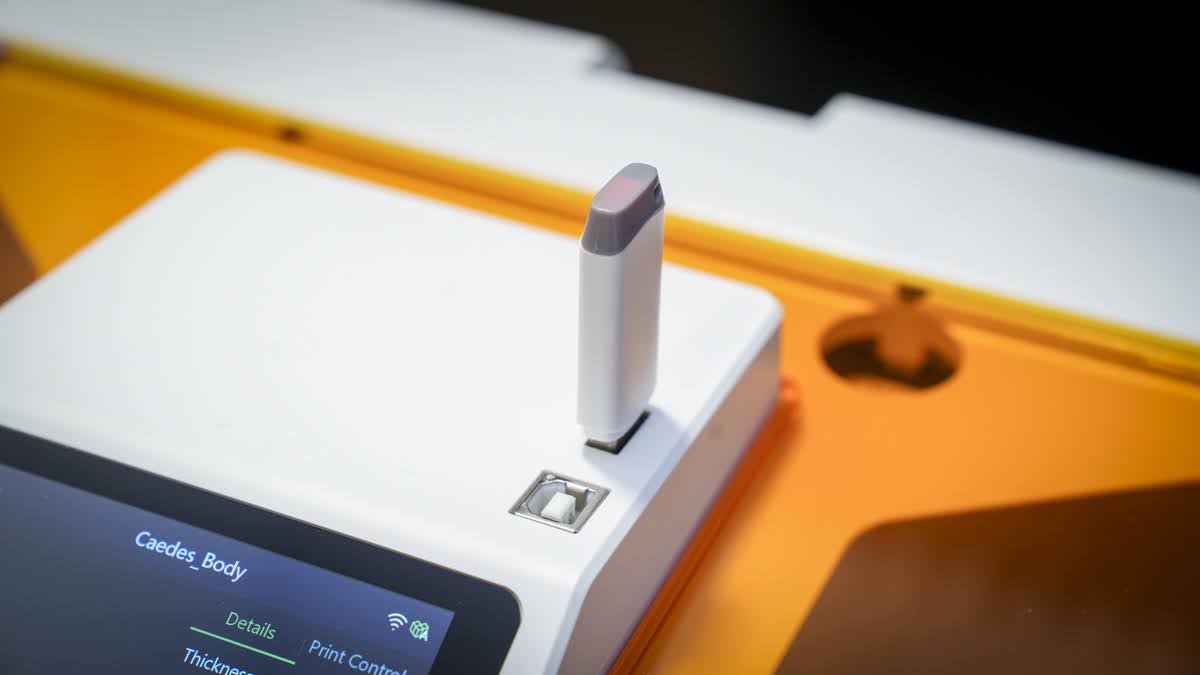
This is the first of the Piocreat Halot-X machines that I’ve seen, and it’s a really good start, although they do have a foundation with the Creality Halot machines, which I was extremely impressed with in the past. The new mechanism and design really do seem to work, and I like the fact that it has such a small form factor compared with the older machines.
But for me, the real winner here is that new build plate, just a simple twist action to release the 3D print makes a huge difference, not only in time but in the amount of mess and faff that can be involved with resin 3D printing.
Extracting the print from the build platform is one of my pet hates with these machines, and the fact that they’ve actually come up with a very good and simple solution makes a huge difference.
Then there’s the auto-levelling system, which also just seems to work. I’ve printed several litres of resin through the Halot-X1, and while on a couple of occasions the resin has run low and needed refilling, the success rate has been exceptionally good. I’ve only seen a few incidents where the support structure has failed, with the usual odd gaps in the print, but those have been rare. For the most part, I’ve had a near 100% success rate on the printing process.
There’s still the issue of having to clean and cure the print afterwards. If you just want a quick and easy solution, then don’t use resin, go directly to FFF. However, if you want the best possible detail from your prints, and as close to injection moulding as you can get, then this is a superb option. If you’re printing miniatures or jewellery designs, then the fine detail and accuracy make this a superb option.
Should You Buy the Piocreat Halot-X1?
| Row 0 - Cell 0 | Row 0 - Cell 1 | Row 0 - Cell 2 |
Value: | High-quality resin printers don’t come cheap, but for the quality of detail and build, this is exceptionally well priced | 4 |
Design: | This is the first generation of this innovative design, but it does appear to work, despite a few small quirks. | 4.5 |
Features: | One of the great things about resin printers is their relative simplicity, and here the refinement of levelling and the build platform make a huge difference. | 4 |
Performance: | The detail is as good as any, and the speed sits around the mid-range, giving a good, balanced approach to this new resin printer. | 4.5 |
Total: | As one of the first Piocreat 3D printers I’ve looked at, I have to say it’s extremely impressive — especially considering the size and price. | 4.5 |
Buy it if...
You want high‑detail prototyping
You regularly print miniatures, jewellery prototypes, dental models, or other parts where ultra‑fine resolution matters.
You're a regular user
If you need a reliable, compact resin 3D printer, the quick-release build plate just makes it easier to use.
Don't buy it if...
You're on a budget
You want a cheaper resin printer and don’t need 16K resolution or the extra automation.
You hate a messy workflow
Resin printing always demands cleaning, ventilation, and materials handling. If you prefer plug‑and‑play with minimal fuss, an FDM machine might be better.
For more essential crafting tools, I tested the best 3D printers and best laser engravers
Alastair is a photographer, filmmaker and tech writer who has been working in the publishing industry since the late 1990s. For more than 25 years he has covered photography, video and technology across Future's photography, technology and gaming brands. He runs a photography and video production company and lectures in TV and film. He can usually be found testing mini PCs or prototyping and prop building with the aid of 3D printing.
You must confirm your public display name before commenting
Please logout and then login again, you will then be prompted to enter your display name.
